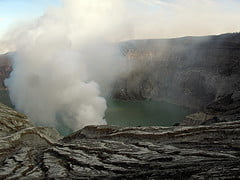There has been a lot of discussion in the development blogging world about crowd-sourcing and its future in disaster response. It tends to focus on humanitarian technology, crisis mapping, and in particular the Ushahidi tool. Today, Reuters reported on a smaller, more personal effort.
An Indonesian community near the erupting Mount Merapi volcano has been using Twitter to help manage a disaster response. The Twitter account is part of a broader information network that began with community radio, called Jalin Merapi. It was originally designed to tracek signs of volcanic eruptions. Now, according to Reuters, “Jalin Merapi has helped shelters that are unable to receive government aid by deploying about 700 volunteers who report by tweeting specific aid needs…the community announced they needed help to provide meals for 30,000 people, and the meal was ready in four hours.”
It’s a great story, and it’s interesting for a couple of reasons. First of all, the Jalin Merapi network is mobilizing local resources, not guiding an influx of foreign aid. The ability of social media to connect disaster survivors with local benefactors may over time decrease the need for international relief in response to disasters.
Secondly, Twitter is actually a pretty bad tool in situations like this. It has no way to verify accurate information, the data stream is full of random clutter, and it can slow or crash because of rumors about Brangelina. But people use the technology they are comfortable with in times of crisis, and in the case of Indonesia, that was Twitter. It’s a message to keep in mind when designing ICT for development tools.
